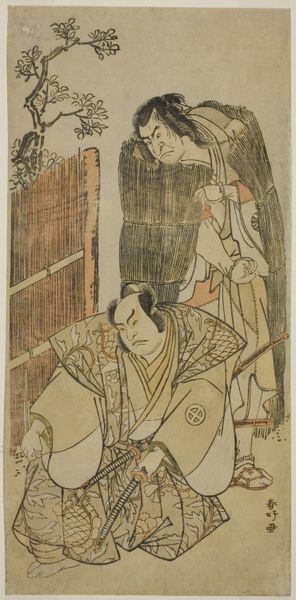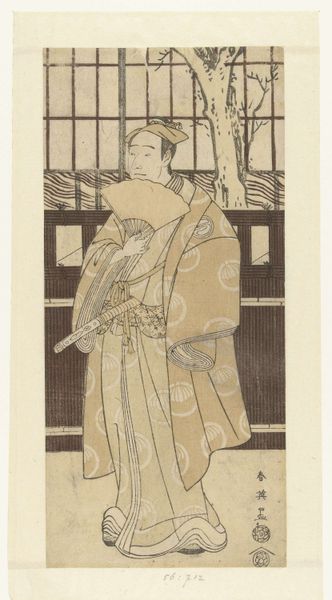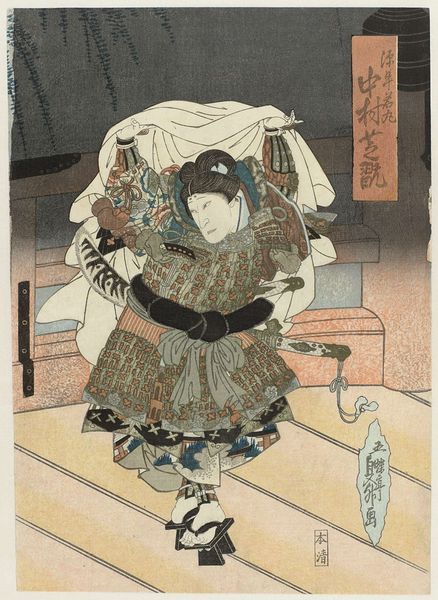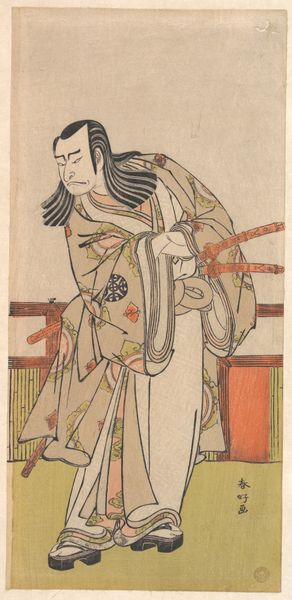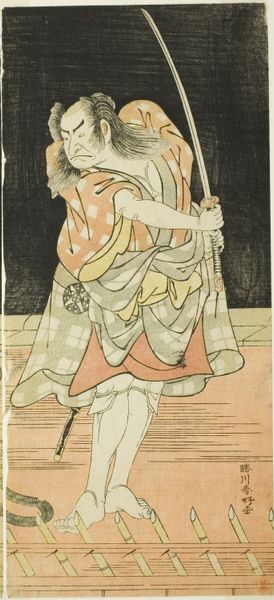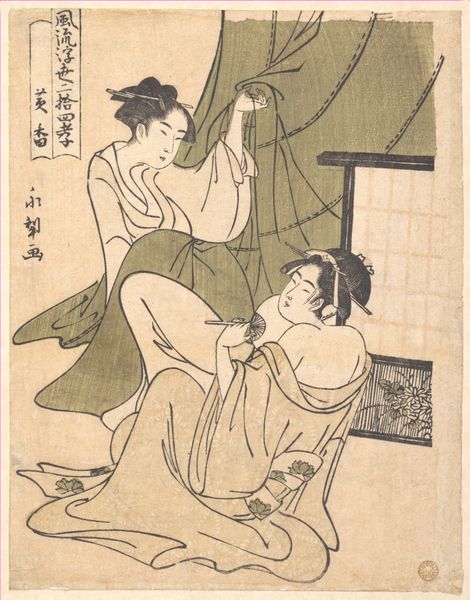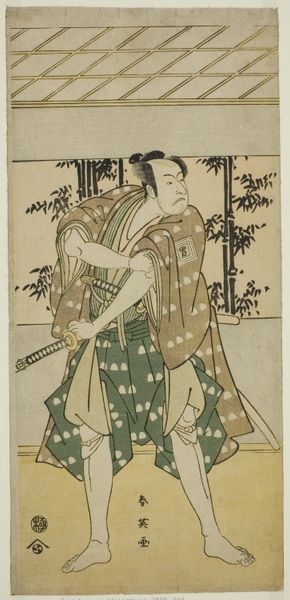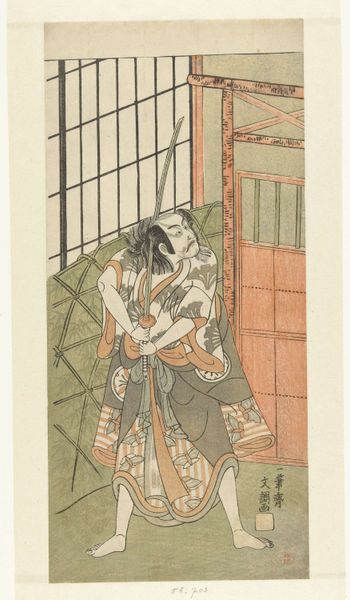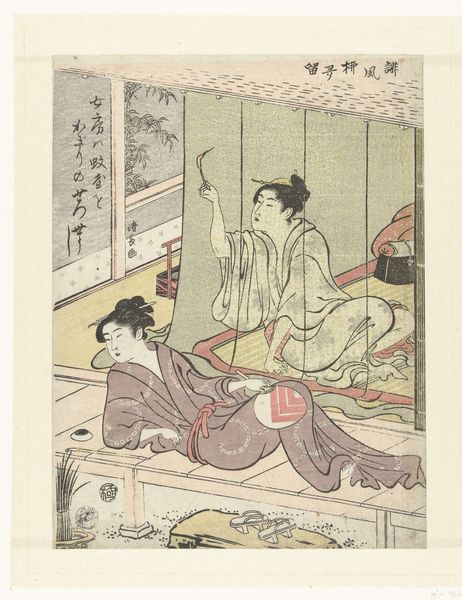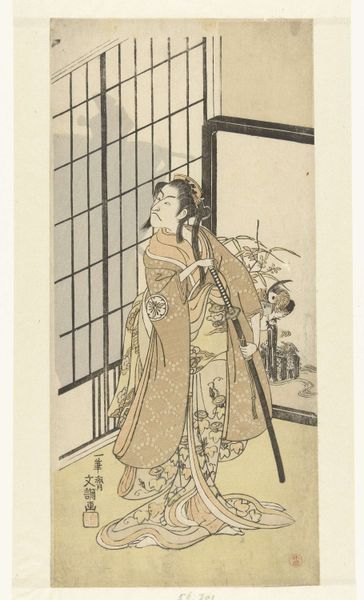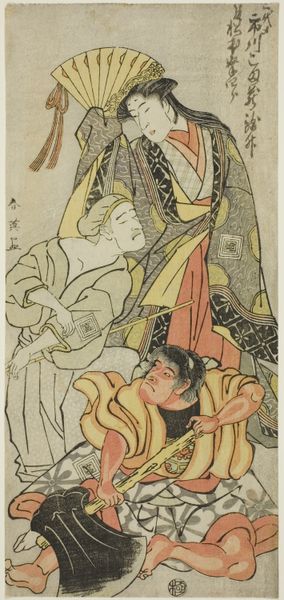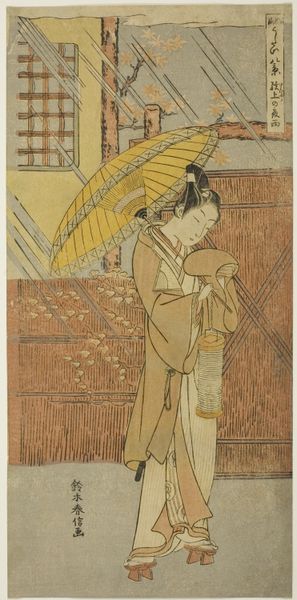
Acteur Otani Oniji met geheven zwaard, staand bij poort; bij nacht. 1793 - 1797
0:00
0:00
print, woodblock-print
#
portrait
# print
#
asian-art
#
ukiyo-e
#
figuration
#
woodblock-print
#
genre-painting
Dimensions: height 331 mm, width 154 mm
Copyright: Rijks Museum: Open Domain
Curator: This woodblock print by Katsukawa Shun'ei, dating to around 1793-1797, presents a striking image of the actor Otani Oniji. The title is "Acteur Otani Oniji met geheven zwaard, staand bij poort; bij nacht.” or translated to "Actor Otani Oniji with sword raised, standing by gate; at night." What is your initial reaction to it? Editor: My first impression is tension. The way he's hunched, sword raised…it’s theatrical but feels heavy with intent. And the dark backdrop adds to that sense of drama. Curator: Yes, and the style itself is deeply rooted in ukiyo-e, or "pictures of the floating world," prints that often portrayed kabuki actors in their roles. Shun'ei, known for his portraits of actors, was part of a movement shaping the visual culture of the Edo period. Editor: It’s interesting how his body almost mimics the angle of the gate roof behind him, like he’s a structural element of this dangerous stage. That sword, of course, is an immediate signal. Beyond its practical use, the sword symbolizes authority, power, and even a kind of austere beauty within Japanese culture. Its presence here amplifies that drama you mentioned. Curator: Exactly. And while we see this character depicted at night, suggesting secrecy, the prints themselves were disseminated quite publicly, feeding the cult of celebrity around kabuki actors. The gaze is so direct; Shun’ei, who led the Shunsho school following the death of his teacher, understood the market well. Editor: Thinking about that gaze, notice how prominent his brow is, creating an intensity furthered by those visible bare feet. They strike me as odd, an unlikely look, until you consider the potential symbolism there as one that reflects being grounded, ready for anything, maybe a connection to the earth even as he brandishes that sharp symbol of authority? Curator: An insightful point, and it’s fascinating to see the details such as those bare feet and to know how these prints functioned within a vibrant popular culture, reflecting the social landscape and the people’s fascination with theater. Editor: Yes, looking beyond the aesthetic, we’re seeing glimpses of cultural narratives, the power of symbolism, and the artist’s keen understanding of human drama frozen in a single, powerful moment.
Comments
No comments
Be the first to comment and join the conversation on the ultimate creative platform.
